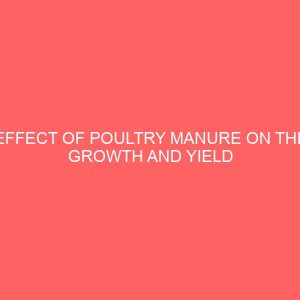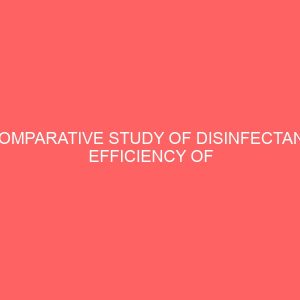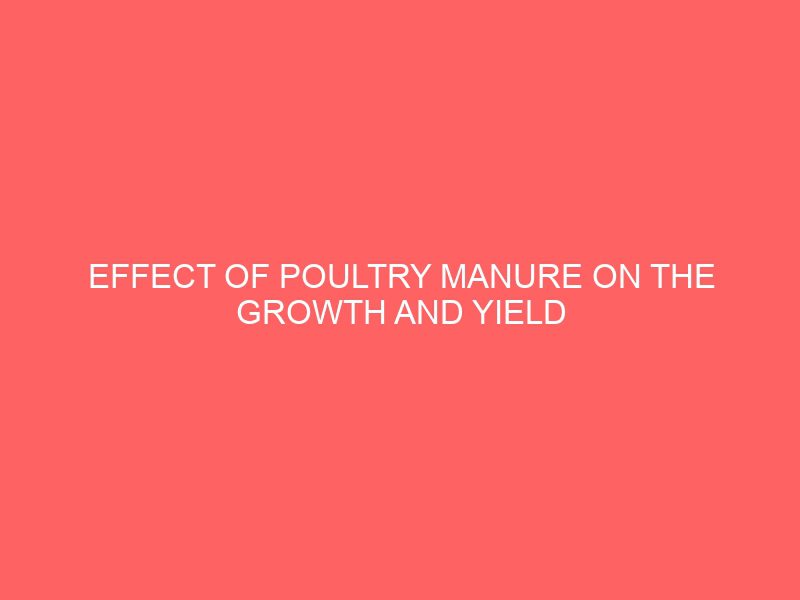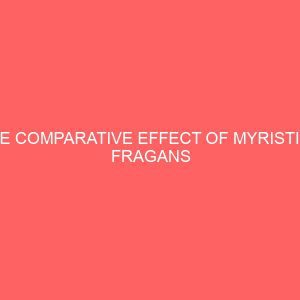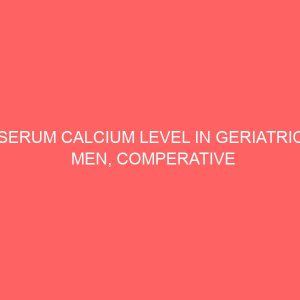Description
CHAPTER ONE
1.0 INTRODUCTION
1.1 EFFECT OF POULTRY MANURE ON THE GROWTH AND YIELD OF TERFERA.
This research is on effect of poultry manure on the growth and yield of Tefera. Watermelon, (Citrullus lanatus var. lanatus) is an important vegetable crop in the tropics, Nigeria inclusive. The fresh Watermelon pod contains approximately 86.1% water, 2.25% protein, 0.2% fats, 9.7% carbohydrate, 1.0% fibre and 0.8% ash (Purseglove, 1984). Watermelon is one of the most common vegetables available all year round in Nigeria due to regular rainfall and irrigation system. The fruit is considerably important in the diet of people around the world, particularly for those in West Africa and other tropical areas whose staple food consists of bulk starchy foods like pounded yam, cassava flour and others. Watermelon is also used to compliment such staple foods since it is a good source of vitamin, minerals, and proteins (Funso and Bassir, 1976). The fruit contains mucilage which gives a slippery texture on cooking which can be served as a thickener. Watermelon fruit contains vitamins A and C with traces of vitamin B. It is a good source of calcium, phosphorus and iron. It contains 2.7 – 3.0% protein and a significant amount of riboflavin. The consumption of these edible parts has been reported by Fatokun (1976) to promote digestion and helps prevent constipation. It is also used as a medicine for the treatment of peptic ulcer. It is also used in the manufacture of margarine. It is used in curries and chutneys and as a substitute for coffee in India. Watermelon seed cake is rich in protein and makes an invaluable animal feed. In various parts of the world, it is known as Watermelon, Ochro, Okoro, Quimgombo, Quingumbo, Ladies Fingers, Gombo, Kopi Arab, Kacang Bendi, Bhindi (S. Asia), Bendi (Malaysia), Bamia, Bamya or Bamieh (middle east) or Gumbo (Southern USA).
Watermelon is a fruit vegetable, grown mainly for the pods. The tender fruits are used as vegetables
either boiled or sliced and fried. Ripe seeds contain about 20% of edible oil. It is quite susceptible to frost and will not thrive where there is a continuous dry spell. It grows in all types of soils, thriving well in moist, friable, well drained and well matured soils (Tindal, 1983).
The mucilage is extracted and used in gum production. Medicinal use of Watermelon is the role of the pod mucilage in plasma replacement or as blood volume expander. The immature fruits are used in the treatment of venerable diseases (Olajide, 1995).
Nitrogen is an important and commonly deficient nutrient element in tropical soils and it is generally needed in large amount by plants. It is an integral part of the chlorophyll (Epstein, 1972). Nitrogen is a key element required for plant growth and the symptoms of soil nitrogen deficiency range from leaf chlorosis to stunted growth and eventually poor yield. Different opinions have been expressed with regards to Watermelon fertilization using organic manures like poultry droppings, cowdung. For instance, Schippers (2000) recommended poultry manure to be applied at the rate of 20tonnes /ha before sowing. This is consistent with Kogbe’s (1976) recommendation of 20tonnes /ha. Among all the organic manures, poultry manure is the easiest to access in South Western Nigeria.
Poultry manure has been found to produce higher seed yield in maize than cattle manure. This was attributed to the higher content of nitrogen and phosphorus in poultry manure coupled with the fact that it furnishes the soil with more magnesium and trace elements (Purseglove, 1984).
1.2 Problem statement
Emphasis is now placed on use of organic manures instead of inorganic sources of nutrients because of the need to take pure foods devoid of chemical elements that are easily absorbed from inorganic sources of nutrients. Using inorganic fertilizers in lowland areas may also increase dangers of underground water pollution. Farmers cannot afford to use mineral fertilizers to boost their vegetable yields. Using these chemicals, especially on Watermelon or tomatoes that are consumed fresh may increase the dangers of ingesting these chemicals that are absorbed and partitioned to fruit or to economic yield of such crops (Williams and Harris 1986).
Information on the effects of these organic sources particularly, poultry dropping on Watermelon fruit yield and utilization of the nutrients absorbed is still not too abundant in literature. Therefore, the need to assess poultry manure effect on the yield of Watermelon.
1.3 Nutritional Benefits of Watermelon Composition per 100 g of edible portion in Watermelon
Moisture 89.6 g Minerals 0.7 g
Protein 1.9 g Carbohydrates 6.4
Fat 0.2 g Calcium 66 m
Fibre 1.2 g Iron 0.35 mg
Calories 35 Potassium 103 mg
Phosphorus 56 mg Thiamine 0.07 mg
Sodium 6.9 mg Nictonic acid 0.6 mg
Sulphur 30 mg Vitamin C 13 mg
Riboflavin 0.1 mg Magnesium 53 mg
Oxalic acid 8 mg Copper 0.19 mg
1.4 Objective of the Study
The objective of the study therefore was to evaluate the effects of rate of poultry manure application on the growth and yield of Watermelon (Citrullus lanatus var. lanatus)

